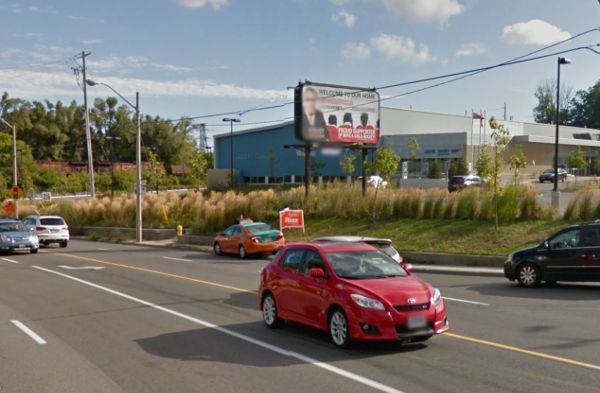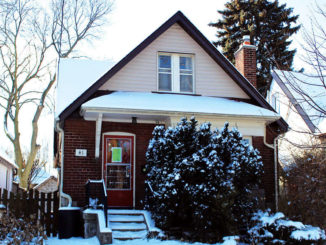It seemed like a seismic shift in the Committee of Adjustment; the New York Times would call it an “epiphany”. The committee turned down the application for minor variances at 438 Broadway Ave. based on it not meeting the four tests of the Planning Act:
- Is the variance minor?
- Would the granting of the variance result in a development that would be desirable for the appropriate development or use of the applicant’s land or building?
- Does the variance requested maintain the general intent and purpose of the zoning by-law? and
- Does the variance requested maintain the general intent and purpose of the Official Plan (OP)?
And even more interesting, the committee member who made the motion took pains to point out that her major concern was that the application did not reflect the character of the neighbourhood. The Official Plan states in Chapter 4, Section 4.5 that:
- “No changes shall be made through re-zoning, minor variance, consent or other public action that are out of keeping with the physical character of the neighbourhood.”
It seems that the committee rarely takes this into serious consideration in its decision-making.
I note that the context of this application was a block of detached neo-Georgian style, two-storey red brick homes with peaked roofs of uniform height. The exception is a white stone dwelling, recently constructed next door. This “stone castle” is an outlier in the neighbourhood, at least for the moment.
The refusal was the result, but it was the articulate verbal and written submissions of the immediate neighbours, Judy Hembruff and Tim Johnson, Wilmar Kortleever, Dan Jakubowicz, and the LPOA that led to the refusal of the 13 so called “minor variance” requests. These variances were applied to almost every single aspect of the design – width, height, length, side-yard set-backs, floor space, ratio of building area to lot size.
Hembruff and Johnson described the request in very human terms, as “the personal equivalent of allowing someone to tower over you and stand too close – forever”.
Here were the requested variances and the their specific concerns:
- To reduce the side set-backs from what is required by half, from 1.2 m to .61 m. (from 4 feet to 2 feet).
– That would remove their right of access to the side of their home, so they would not have the ability to clean and maintain gutters, maintain venting, chimney and other exterior surfaces.
– There would be loss of light to existing windows.
– The existing trees (mature cedars and white pine) would not survive the renovation due to damage to their root systems.
– Their home’s foundations would be put at risk both during and after the build, compromising their home’s existing weeping tiles, resulting in an increased risk of flooding in their basement.
– Their right to the enjoyment of their back yard would be affected and the spacious open feeling within and between the yards would be eliminated.
- To increase the maximum permitted building height.
– The new build would exceed the height of their chimney, which vents both furnace and fireplace, and would therefore no longer be able to draft properly. The chimney would likely have to be extended because it would no longer meet gas company requirements and this would result in additional costs.
– Anything that hits the new roof of the new build (water, snow, leaves) would fall onto their roof and fill their gutters.
– The amount of sunshine would be significantly reduced, increasing the potential for snow build-up, slow melt and roof rot.
– The morning sun would no longer shine into their back yard compromising their existing landscaping and their right to the enjoyment of their back yard.
- To increase the maximum permitted building length, lot coverage and floor space by 15 per cent
– You know this – it’s too long, too big and too intrusive, and just does not fit the neighbourhood!
Back to the epiphany! While waiting for the Broadway item to come up that morning, we could not help but notice that the committee was unusually attentive, diligently questioning the developers’ agents and turning down several of the applications. This was not business as usual. Has the committee turned over a new leaf, received new directions, or what? Is this a one-meeting wonder or a real change? We can only hope it is the latter. But what is the next step in the Broadway case? The neighbours wait to see if the owner appeals to the OMB. As always the combined efforts of the neighbours will contribute greatly to the outcome.
Still on the topic of demolition/ infilI development, I get many questions about the status of 27 Fleming Cres. and 73 Donegall Dr.
27 Fleming, which was featured in the July 2014 edition of Leaside Life, is a particularly egregious demonstration of the city’s lack of effective building enforcement, that happens to have been carefully monitored and documented by neighbours (http://leasidelife.com/builder-wont-stop-city-does-nothing/). This demolition and reconstruction project involved the flouting of numerous planning and building regulations, including proceeding with construction without approval for minor variances (zoning by-laws) and removal of walls so it no longer could be considered a “renovation”, un-
authorized change of grade, and failure to display a building permit.
This house, for which construction was eventually stopped, continues to be unresolved to the present. It appears that the city is reluctant to take the owner to court, which is what it takes to do more than just stop construction.
73 Donegall has some similarities – construction recently stopped due to questionable compliance with the zoning by-laws. But how did we get there?
Last time we heard about this address, it was about a big victory at the OMB
(http://leasidelife.com/73-donegall-a-big-success-at-the-omb).
It appears that the owner, having failed to win approval for a three-storey tower house, decided to live with the zoning – to build “as of right”. So the house was demolished late in December and foundations and walls for a new house quickly arose in January.
However, neighbours soon became disturbed at the height and called the building department. They came out to inspect and they issued a stop work order. No one seems to know where this is going.





